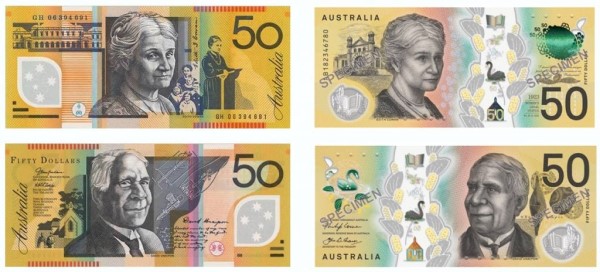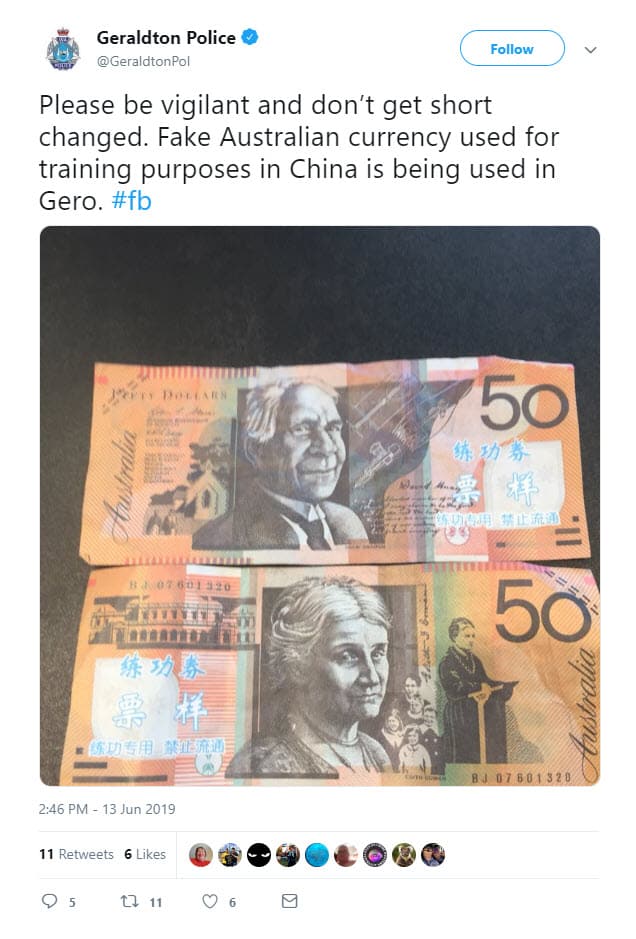InfoChoice EXCLUSIVE
One intriguing change on the new $50 note has been missed by the media and other commentators. No, not the amazing clear plastic window with moving security features. This is something else that is just weird. Can you pick the big difference that the mainstream media has missed?
Now we have the official explanation from the Reserve Bank, exclusively for InfoChoice readers.
New $50 note vs old $50 note
At InfoChoice we love comparing and every now and then we compare something a little bit different, one out of the box ....
This week we are comparing the old $50 note with the new $50 note.
The $50 note is Australia's favourite bank note according to Philip Lowe, the governor of the Reserve Bank. And Aussies know their favourite $50 note as the "Pineapple.” Now the Reserve Bank of Australia has released a new plastic polymer Pineapple to replace the first polymer version of the $50 note.
The new notes feature a large clear plastic window embedded with moving security features that are genuinely amazing and have Aussies gazing at their money to see the birds move and the numbers change.
And the new note has one very interesting change that has previously not been explained by the RBA. Can you see the big difference? When we tell you what it is, you'll never be able to unsee it.

Like the old note, the new $50 note features famous Western Australian feminist politician Edith Cowan on one side and inventor and author David Unaipon on the reverse side.
The RBA says the new pictures "are drawn from the same source photographs” as the previous portraits on the old note, but there are differences. The micro-printed text on the notes are drawn from Unaipon's book "Legendary Tales of the Australian Aborigines” and Edith Cowan's first speech to the Legislative Assembly of Western Australia.
The new $50 note has a top-to-bottom clear window with a reversing number and a flying bird feature. The clear window also has microprint and a rolling colour patch.
For the blind, the $50 note has four raised bumps on the long edges.
Australia's bank notes are among the safest in the world says the RBA because the polymer material and security features make them very difficult to counterfeit. A committee of six experts advises the RBA on the design of banknotes, including the Director of the National Gallery of Victoria, Dean of Design at University of Sydney, Head Curator of Australian Art at the Art Gallery of NSW and a Professor of History from ANU.
Have you noticed the one weird change that has not been reported or explained in the media or by the RBA?
Look at the faces of David Unaipon and Edith Cowan. Despite these portraits being based on the same historical photographs as previously, both are now looking in a different direction!
Yes that's right. On the old $50 note, David and Edith are looking towards the camera, or the holder of the note. On the new $50 note they have turned their eyes and are now looking elsewhere. What are they looking at? Why has the RBA changed this?
You don't notice the change immediately, but then you can't miss it.
So why would the RBA change something like that? Where is the extra security in changing the direction of David and Edith's eyes?
InfoChoice has the answer.
"The design and layout of the banknotes in this new series has been modified to accommodate a number of these new security features,” a spokesperson for the RBA told InfoChoice on Tuesday 16 July.
"The inclusion of the top-to-bottom window, while making the new banknotes more resilient to counterfeiting, has meant the portraits can no longer be located in the centre of the banknote.
"The portraits are now positioned on the larger part of the banknote and each face towards the window,” said the RBA spokesperson.
Aha! So like the rest of us, David and Edith are now staring at the full height clear plastic window on all our new banknotes. Maybe they are fascinated how the birds fly with their wings flapping gracefully. Maybe they like the reversing numbers.
Maybe David and Edith got bored looking at us. Who knows but the window certainly makes our money more interesting. You can read more about Australia's banknotes at the RBA. You can compare financial products at InfoChoice.
Why does Australia need new $50 notes?
The old $50 was a polymer note with extensive security features.
The RBA says that the first generation of polymer banknotes "has ensured that Australia's counterfeiting levels have remained relatively low over the past 20 years, particularly compared with international experience.”
The RBA also says that the "process of designing and producing a new banknote is extremely complex. Extensive research and development is required.”
So why do the RBA need to (again) change Australia's banknotes?
Despite the extensive security features on the old notes, it was beginning to be copied and counterfeited by fraudsters in Australia. Last month police in Geraldton WA tweeted photos of counterfeit $50 notes with Chinese markings. The Chinese language characters printed on the notes says "training money.”

Sergeant Paul Johnson from Geraldton said the counterfeit $50 notes were "terrible” quality but had still fooled at least one taxi driver who accepted payment in the dark.
The fake $50 notes are similar to fake $20 notes reported to police in northern NSW last year.

